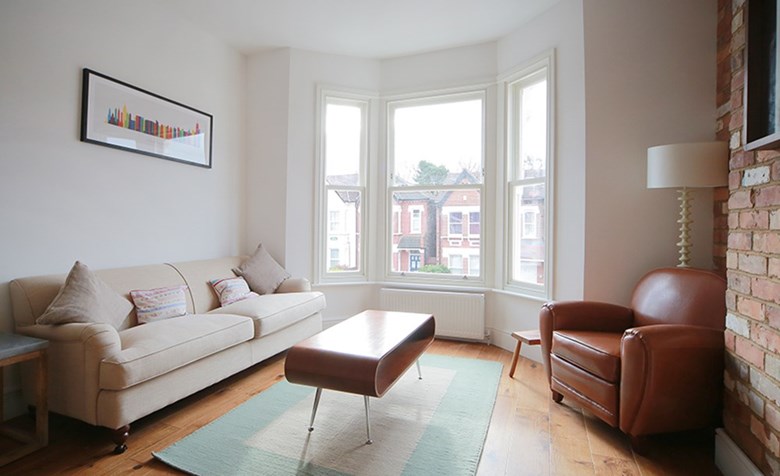What Are Victorian Sash Windows?
Posted: 12 December 2023

The Victorian period spanned more than 60 years and saw a whole range of technological innovations. Tracing the evolution of Victorian architecture over those 60 years is a story in itself, and there is a wealth of literature on the subject. Thankfully, the story of Victorian sash windows is a more straightforward one.
There were similar choices to today in terms of style when it came to fenestration. The casement windows that have been the preference for the past 100 years or so first appeared long before the Victorian era and were typically found in smaller houses. But regardless of size or location, the popular window design of choice was the box sash.
Fenestration’s Famous French Import
The Victorian era officially commenced in 1837 when Queen Victoria began her 63-year reign. The previous era was known as Georgian, and it was during this period that sash windows became popular. Probably a French invention, they first appeared on houses in the UK in the late 1600s.
Sash windows come in different kinds, but most commonly, they comprise two panels, known as sashes, that can be opened vertically using a clever mechanism of cords, pulleys and counterweights.
From Georgian to Victorian Sash Windows
Architectural and technological know-how, as well as fashion, changed dramatically over the Georgian and Victorian periods. That included the design and appearance of sash windows. Georgian sashes are typically comprised of several smaller panes, typically six. So, a Georgian sash might have an upper sash and a lower sash with six panes of glass in each.
Victorian sashes usually have larger panes of glass. Instead of the six over six design of the Georgian period, two over two became commonplace for larger windows or single pane sashes for smaller ones.
This was not merely a case of changing fashions. Glass manufacturing technology advanced significantly in the 19th century, making it possible to mass produce glass in larger panes than was possible in the Georgian era.
This was a case of technology driving fashion, and it led to the large paned sash windows that became synonymous with the Victorian period and are still in place on more than seven million Victorian properties today.

Continuing Relevance of Victorian Sash Windows
Victorian sash windows as a style are more than historical artefacts. Over the past 100 years, casement windows have overtaken sash windows in terms of popularity, primarily due to their simplicity – no cords or counterbalances here. But there is still a place for Victorian-style sash windows, both in period properties, more modern homes from the past few decades, and even new builds.
Victorian sash windows are highly versatile in this respect. Georgian sash windows look old-fashioned with their small panes and would look out of place with more modern architectural designs. But the clean Victorian design is different and can be incorporated into modern houses, apartments and commercial properties.
Restore or Replace Your Victorian Sash Windows?
If you have a Victorian property with its original sash windows that are rotten, leaky or too stiff to move, you will face the question of whether to repair or replace. Of course, the answer depends on several factors. If it’s just a case of a sticking mechanism, and the frame is still sound, it could be repaired quite quickly – but you will still be stuck with the poor thermal efficiency of Victorian single glazing.
Even if the frame is rotten, there are experts out there who can restore practically anything. That’s fine if you are a stickler for originality, but from a practical perspective, new Victorian-style sash windows that look just like the originals but have 21st-century performance make far more sense.
Victorian Style Sash, Modern Applications
We mentioned earlier that even if you have a more modern property, the Victorian style of timber sash window makes sense for all sorts of reasons. Research by property experts revealed that sash windows could add up to 10 per cent to property value and increase the likelihood of a sale.

That’s food for thought if you are fixing up a home and looking to flip it for a profit. But sash windows can be a great choice in your “forever home”, too. It’s not just a case of them looking great and exuding quality. Lomax + Wood’s timber sash windows have the elegance of the Victorian era combined with 21st-century technology. The result is a window that sets new benchmarks for insulation, keeping warmth in and noise out.
If you can do without the whole rigmarole of cords, weights and pulleys, there is a solution to that, too. A spring sash replaces that entire mechanism with a simple spring. It’s lighter, it’s cheaper, and it’s less maintenance. In fact, it is an obvious choice in newer properties. Traditional box sashes are still available for owners of period properties who want to keep things original.
FAQs In Relation to Victorian Sash Windows
1) Can Victorian sash windows be double-glazed?
It is possible to install double glazing into Victorian sash windows. Usually, it is more practical and cost-effective to replace them with new timber sash windows that will look the same but perform better.
2) Do sash windows add value to a property?
Several factors influence property values, but industry research suggests that sash windows can have a positive effect of up to 10 per cent.
3) Should you keep your Victorian sash windows?
If your sash windows are in a state of disrepair, replacing them is usually the best long-term solution. It is advisable to stick to a sash design, but for added convenience, consider a spring sash instead of a box sash.
4) Are Victorian sash windows secure?
Original sash windows can be a security risk, especially if the closing mechanism is insecure. Lomax + Wood’s sash windows have been tested independently by BMTRADA to meet the Pas 24 Security testing standard. These tests are extensive and designed to resist forced entry by intruders.


















